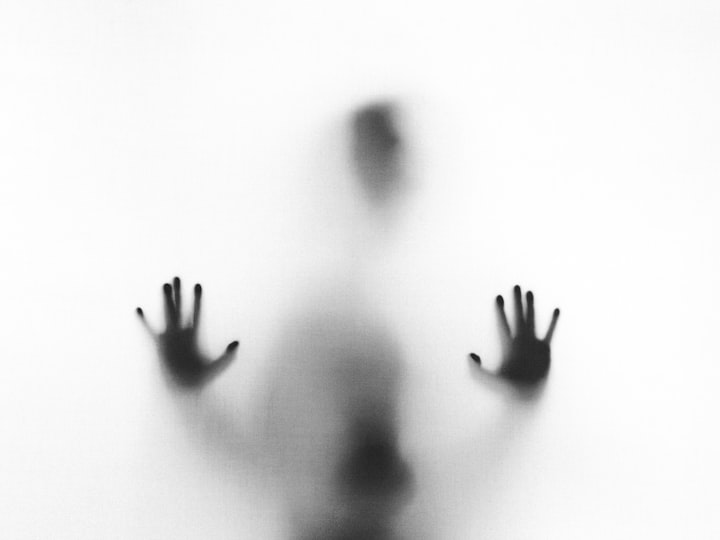What's Behind One of Edgar Allan Poe's Scariest Stories
An Analysis of 'the Black Cat'

“Words have no power to impress the mind without the exquisite horror of their reality,” wrote Edgar Allan Poe (1809-1949), undoubtedly one of the greatest names of American literature. Many of his works, which deal with themes such as love and hate, evil and guilt or insanity, and thus provide a deep inspection of the human nature, prove that.
This analysis will draw on Poe's short story The Black Cat, first published in 1843.
A Story of Evil
One of the central themes of the story is apparently the one of evil and the ability of human beings to perform malicious deeds. However, as the narrator himself contemplates, the issue is not an evil committed out of some reason, but more likely doing “wrong for the wrong's sake only”, as mentioned in the text. The narrator talks about a “spirit of perverseness” that is rooted in the human character. The thought of doing something just because he is able to do it, although certain rules tell him not to, seems to be the impulse that makes the narrator commit the crimes. In a way, he is tempted by the idea of being as powerful as God himself, when he decides to kill his cat for no reason. Also, a part of him is mesmerized by the idea that he is the master of his own soul and that he can decide whether he will be good or bad.
Symbolically, immediately the night after committing the crucial deed of hanging the cat, which is one of the most intense parts of the text, the narrator's house burns down. It could be an allusion to his soul being destroyed by the cruel act.
Furthermore, there appears to be a noticeable gradation in the viciousness of the narrator developing throughout the story. First, he started speaking harshly to his wife, then later he used physical violence against her, until in the end, he killed her. Similarly, he first just mistreated his animals, later he deliberately hurt his cat, and finally, he cruelly put it to death.
This indicates that after having committed one crime, it always seems easier for a person to perform another one, and so on.
Split Personality

The idea of pure evil indicated in the text, however, contrasts with another theme developed there, that is insanity caused or encouraged by alcohol consumption which leads to a split personality. The ambiguity of the narrator's motives actually creates the complexity of this short story.
The narrator himself admits at the beginning of the story that his character “experienced a radical alternation for the worse” owing to the consumption of alcohol, which he calls a disease. It is clear that he committed the first crime – cutting one of the cat's eyes – under the influence of alcohol, which paralyzed his senses.
“The fury of a demon instantly possessed me. I knew myself no longer. My original soul seemed, at once, to take its flight from my body...”
After this deed, he sobered up and started to regret what he did, which was then an impulse for him to start drinking again, in order to forget. This shows that the crimes were not committed simply of his own free will, but that they at least partly resulted from some causation.
Nevertheless, the psychological condition of the narrator seems to get worse throughout the story, and the fact that he considers doing wrong for the sake of wrong alone indicates that he must suffer from some kind of mental illness.
Besides, this illness seems to divide his personality into two opposing parts. It is maybe most obvious in the moment of hanging the cat, when one part of him wants to cruelly end the cat's life while the other part feels sorry for the animal.
“I … hung it with the tears streaming from my eyes, and with the bitterest remorse at my heart...”
Indeed, there always appears to be a hint of regret in the narrator's mind after committing each crime. The moments of rage and the moments of remorse seem to come in waves. His bad conscience actually compels the narrator to make more bad deeds, because in connection with his mental illness, it hunts him and causes him emotional pain he wants to get rid of.
The narrator's second cat may actually symbolize his conscience, because it constantly reminds him of his crime. It is only the narrator who can see the image of the gallows in the white mark on the animal's breast. It follows him everywhere and he feels so afraid of it that he wants to kill it.
Why the cat?

At this point, the significance of the cat should also be examined more closely, as it is a crucial component of the story. The choice of a cat instead of another animal is surely connected to the superstition considering black cats symbols of bad luck, which underlines the horror atmosphere of the story. The narrator happens to mention a “notion, which regarded all black cats as witches in disguise” at the beginning of the story. In his second cat, he then indeed sees a creature that follows and tortures him and, in the end, tricks him into murdering his wife.
“...the hideous beast whose craft had seduced me into murder, and whose informing voice had consigned me to the hangman.”
Concerning the second cat, a question suggests itself, whether it actually is a real animal or just a figment of the narrator's imagination afflicted by his mental illness. Taking into account that the story is told from a perspective of a mad person, who, on top of that, claims the opposite in the beginning, it is not quite clear what the reader can believe in the narration.
There are several indications of the second cat being just some kind of illusion. First of all, there is the coincidence that it is also black and has only one eye like the narrator's first cat. Secondly, the origin of the cat is also mysterious, as the narrator finds out when he wants to purchase the cat from the landlord: “...this person made no claim to it – knew nothing of it – had never seen it before.” Finally, the narrator first notices the cat lying on a barrel of hard liquor, probably in some tavern, which happens quite suddenly. “...what now caused my surprise was the fact that I had not sooner perceived the object thereupon.” This indicates that there could be a connection between this incident and the mental state of the narrator influenced by alcohol, and thus that the cat actually exists only in the narrator's mind.
As previously mentioned, the second cat could represent the narrator's bad conscience. Alternatively, it could also stand for his alter ego, as his personality is split. He cannot live with himself because he still must think about the crime he did. His own conscience follows him everywhere. Additionally, by maliciously killing his cat, he did something inhuman, an atrocity, which made his soul become animal-like.
“And now was I indeed wretched beyond the wretchedness of mere Humanity. And a brute beast – whose fellow I had contemptuously destroyed – a brute beast to work out for me – for me, a man fashioned in the image of the High God – so much of insufferable woe!”
The cat also plays an important part in the situation when the narrator murders his wife. In his insanity, he is convinced that he is killing the cat where, in fact, he is aiming the axe at his wife. Thus, one part of his split personality actually may have wanted to commit this crime in the first place. After this deed, all hints about the presence of the cat suddenly disappear. The narrator feels relief and does not show any remorse. He seems to have suppressed his conscience embodied by the cat. However, at the end of the story, the other part of his personality, which is able to feel pangs of conscience, comes out again. In fact, it is not the cat who gives the narrator away to the policemen, but he himself.
A Powerful Horror Story

To conclude, this short story can be seen as an attempt to uncover the source from which the evil in a human personality originates. It emerged that the issue is very complex and cannot be resolved by giving only one simple answer. The mystification of the narrator and the unpredictability of human character itself seem to be the important aspects that create the horror in the story and shock the reader more than images of killing or superstitious signs. The strength of Edgar Allan Poe's work consists exactly in that.
About the Creator
Anezka Smidlova
I am a peculiar individual who loves music, education, travel, writing and having a good laugh. Don't take me too seriously, just enjoy reading!






Comments
There are no comments for this story
Be the first to respond and start the conversation.